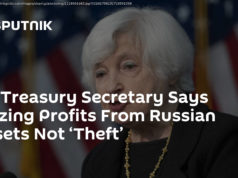Gasoline prices depend on global supply and demand, which has been out of whack since the pandemic started. California drivers pay a premium for special blends.
Anyone who’s filled up a car in recent months knows that gas prices are crazy high. And it’s no secret that prices in California are well above those in the rest of the country — the current average price in California, about $4.75 per gallon, is about $1.20 more than Wednesday’s U.S. average, according to AAA. And prices are expected to go up some more before they go down, the U.S. Energy Information Administration projects. The pain isn’t ours alone; it’s being felt globally as gasoline prices rebound from the pandemic-induced slump in 2020. But that’s little comfort for Californians shocked by record prices at the pump. What’s behind all this? To a large degree, it’s the same force that’s pushing California housing prices into the stratosphere: Demand has been outstripping supply for some time now. In the case of gasoline, that’s a function not just of COVID-related production problems but also our growing consumption of masks, COVID test kits and plastic packaging. There are extra costs imposed by California’s policies and markets too. Throw in stiff sanctions on Russian oil exports, and that’s a recipe for even more expensive gasoline. Here’s a breakdown of why gas prices are so high. Gasoline is one of many products made from crude oil, which is bought and sold on markets that are global in scope. The buyers typically are refiners that convert the crude into products for consumers or industrial users, including transportation fuels, propane, ammonia and the feedstocks used in some plastic goods. One factor in the current doldrums is flagging crude oil production, which started falling in 2019, the U.S. Energy Information Administration reported. Although it’s expected to return to its pre-pandemic level this year, that’s not going to be enough to sate the growing demand. What happened to production? Geopolitics played a key role at first, in the form of U.S. sanctions on oil exports from Iran and Venezuela and a decision by OPEC nations to cut production. Then the pandemic hit, and the sharp drop in demand for motor fuels led producers around the world to pull back. Since then, consumption of crude oil has rebounded, although the demand for motor fuels hasn’t. Production, meanwhile, has increased at a slower pace, in part because of operational problems and in part because of decisions by OPEC to hold down supplies and keep prices high.
Start
United States
USA — Financial What’s behind California’s painful gas prices? Oil, taxes and geopolitics






